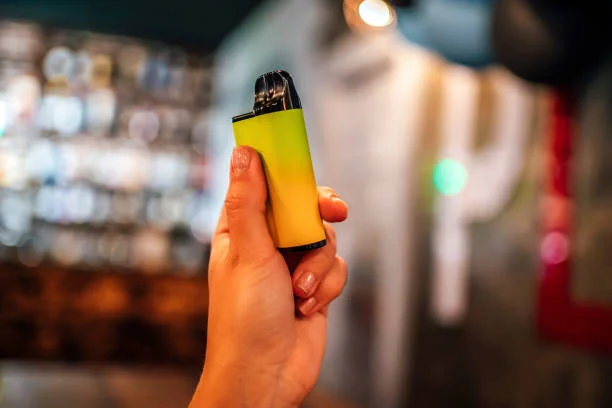If you’ve noticed empty shelves where your favorite vape products used to be, you’re not alone. The U.S. disposable vape market—now a multi-billion dollar global industry—has become a case study in supply chain fragility and regulatory complexity. The recent vape shortage reveals just how interconnected and volatile this landscape is, as vapers across the country face significant scarcity of e-liquids, pods, and devices.
In this article, we break down the causes behind the shortage, spanning government crackdowns, shifting trade policies, manufacturing hurdles, and surging consumer demand. We’ll also provide practical advice on what products remain available, recommend alternatives, and offer tips for navigating this unpredictable environment.
Discover insights that can transform your business—click to read this related post now!
The Complex Reality Behind Empty Shelves
Understanding the root causes of the vape shortage is essential for both consumers and industry professionals. Today’s shortages stem from layered issues:
Supply Chain Strains and Manufacturing Challenges
The journey of a disposable vape starts with a global web of sourcing and manufacturing. Batteries, microprocessors, plastics, and e-liquid flavors are predominantly produced in China, which once provided cost efficiencies but now exposes U.S. retailers to multiple risks:
- Tariffs on Chinese Imports: Newly imposed and escalating U.S. tariffs—reaching 100% or more—have dramatically driven up costs and restricted imports. Closed loopholes have further limited both direct and wholesale shipments into the country.
- FDA Crackdowns and Customs Seizures: Heightened enforcement, especially against brands like Geek Bar, Elf Bar, and Lost Mary, which failed to obtain Premarket Tobacco Product Application (PMTA) authorization, has resulted in entire shipments being seized at the border. Customs and Border Protection play a key role, adding uncertainty and the risk of full container confiscations.
- Component Scarcity and Quality Control: Severe port delays, a surge in global demand, and the fragile logistics network have caused bottlenecks, especially for high-quality lithium-ion batteries—critical for disposable vapes. These delays inflate costs and complicate quality assurance further.
Navigating a Chaotic Regulatory Environment
Perhaps the vape shortage industry’s biggest challenge is coping with rapidly evolving regulations across different regions:
- PMTA Compliance: Many once-popular brands, including Geek Bar and Lost Mary, are now illegal to sell in the U.S. market, with thousands of Marketing Denial Orders (MDOs) issued for flavored vape products. The PMTA process demands significant investment in regulatory filings, product testing, and packaging, creating sky-high administrative burdens and unpredictable restocks.
- Patchwork of International Rules: What’s legal in one country may be banned in another—for example, 5000-puff disposables with 5% nicotine may be standard in the U.S. but prohibited in the European Union due to limits on nicotine strength and e-liquid volume.
- Environmental Regulations: The disposable nature of these vapes creates a sustainability challenge. New Extended Producer Responsibility (EPR) laws mandate collection and recycling of devices, forcing manufacturers to invest in eco-friendly design and reverse logistics.
Distribution and Consumer Behavior
Distribution has become a high-stakes balancing act:
- Logistics & Retail Shortages: Blocked and delayed shipments lead to inconsistent stock, rationed distributions, and angry customers scrambling for their preferred brands. Panic buying and unpredictable restocks—especially for brands hit by enforcement—further squeeze the market.
- Consumer Hoarding and Counterfeits: Anxiety over supply shortages leads to hoarding, creating secondary gray markets and driving up demand for alternative or lesser-known brands. Counterfeits and poor-quality substitutes proliferate, risking consumer trust and safety.
Brand-Specific Impacts and Alternatives
Some of the most recognized names have been hardest hit:
- Geek Bar & Lost Mary: Flagship brands that have borne the brunt of enforcement and customs actions. Even when restocked, they sell out instantly, frustrating loyal users.
- RAZ Vape & Foger Vape: These alternatives have remained more reliably available. RAZ excels in high-performance, flavor-forward disposables, while Foger’s high-puffs, detachable modular design and consistent quality have made it a retailer favorite.
- Other Rising Brands: Hyde, Flum, and Kangvape are making inroads with both consumers and retailers anxious for supply stability and regulatory compliance.
What Vape Products Can You Still Find?
Despite so many pressures, U.S. vapers do still have options:
Tobacco and Menthol Flavors
The FDA’s crackdown has predominantly targeted fruit and dessert flavors. Tobacco and menthol remain the flavors with consistent regulatory authorization, available from major brands like Vuse, Juul, and NJOY. You’ll find these at convenience stores, gas stations, and reputable vape shops.
Refillable Pod Systems and Open-Tank Mods
For those wanting more flexibility, open systems offer two major benefits:
- Wider E-Liquid Selection: Bottled e-liquids from compliant manufacturers are still accessible, even as pre-filled flavored pods disappear.
- Customizability: Refillable devices allow control over settings, flavor choice, and nicotine strength, often proving more economical and consistent during supply disruptions.
Zero-Nicotine Options
Products without nicotine avoid the strictest tobacco regulations. Nicotine-free e-liquids in a variety of flavors can often be found more easily, and vapers can add separate nicotine base if desired.
Tips for Navigating the Shortage
To weather the current landscape, keep these strategies in mind:
- Explore New Brands: Be flexible—your favorite may be gone, but staff at reputable vape shops can recommend compliant and reliable alternatives. Like Raz Vape, you can buy from its brand online store raz-vapes.com!
- Convert to Refillable Systems: If you haven’t yet, switching to refillable devices can buffer you against the volatility of the disposable market.
- Stick to Trusted Retailers: Buy only from establishments that follow regulations to avoid counterfeits and ensure product quality.
- Buy Smart, Not Excessively: Stock up sensibly, but avoid hoarding, which only makes shortages worse for everyone.
Conclusion: Resilience in a Volatile Market
The U.S. vape shortage is more than a temporary setback—it’s a wake-up call about the fragility and complexity of the disposable vape supply chain. Industry players must rethink their sourcing, compliance, and distribution strategies, adapting to new regulations, environmental responsibilities, and ever-shifting consumer demand.
Retailers and consumers must also stay agile: trying new products, watching for counterfeits, and staying informed. The brands that thrive will be those that diversify supply, invest in sustainability, and innovate in both product and logistics. Only by understanding—and adapting to—these industry realities can anyone hope to navigate the uncertain future of vaping in the U.S.
Explore more tips, insights, and secrets that can elevate your journey—start now!






